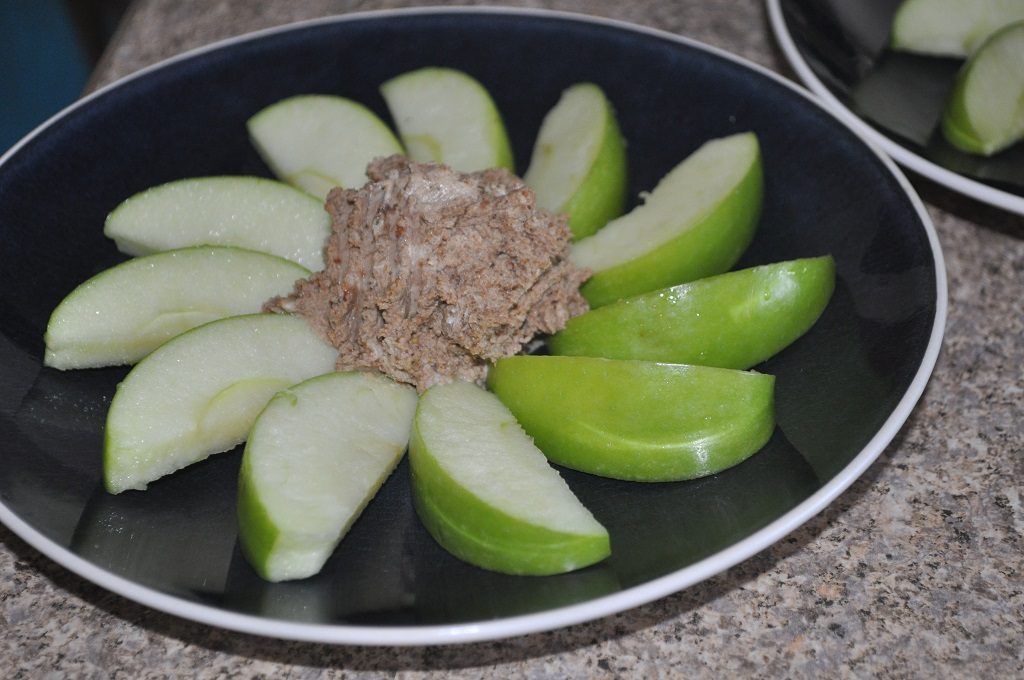If you are trying to reverse proxy OpenHab – that’s over here. This post is about maintaining your own private MQTT server and making it accessible through a reverse proxy.
We want to be able to update our presence automatically (without publishing our location information to the Internet). Scott found a program called OwnTracks that uses an MQTT server – and there’s an MQTT binding from OpenHab that should be able to read in the updates.
We didn’t want to publish our home automation server to the Internet, but we do want to send updates from the cellular data network when we leave home. To accomplish this, I set up a reverse proxy on our Apache server.
The first step is to get an MQTT server up and working — we Installed a mosquitto package from Fedora’s dnf repository
Once it is installed, create a directory for the persistence file & chown the folder to mosquitto uid
Generate a bunch of certs using the ot-tools (git clone https://github.com/owntracks/tools.git). I edited the generate-CA.sh file in the ot-tools/tools/TLS folder prior to running the script. It will more or less work as-is, but modifying the organisation names makes a cert with your name on it. Not that anyone will notice. Or care 🙂 Modifying the IPLIST and HOSTLIST, on the other hand, will get you a cert that actually matches your hostname — which isn’t a problem for something that doesn’t verify host name information, but saves trouble if you get your hostnames to match up.
IPLIST & HOSTLIST
CA_ORG and CA_DN
Then use generate-CA.sh to generate a CA cert & a server cert. Copy these files into /etc/mosquitto/
Edit the config (/etc/mosquitto/mosquitto.conf) – LMGTFY to find settings you want. Specify a location for the persistence file, password file, and add in the websockets listeners (& ssl certs for the secure one)
persistence_file /var/lib/mosquitto/mosquitto.db
password_file /etc/mosquitto/passwd
listener 9001
protocol websockets
listener 9002
protocol websockets
cafile /etc/mosquitto/ca.crt
certfile /etc/mosquitto/mosquittohost.rushworth.us.crt
keyfile /etc/mosquitto/mosquittohost.rushworth.us.key
Add some users
/usr/bin/mosquitto_passwd /etc/mosquitto/passwd WhateverUID
Start mosquitto
mosquitto -c /etc/mosquitto/mosquitto.conf
Monitor mosquitto for the owntracks ‘stuff’
mosquitto_sub -h mosquittohost.rushworth.us -p 1883 -v -t ‘owntracks/#’ -u WhateverUID -P PWDHereToo
Setting up the reverse proxy
The big sticking point I had was that the Apache WebSockets reverse proxy has a problem (https://bz.apache.org/bugzilla/show_bug.cgi?id=55320) which is marked as closed. Fedora has 2.4.23, so I expected it was sorted. However using tshark to capture the traffic showed that the relayed traffic is still being send as clear.
Downloaded the exact same rev from Apache’s web site and checked the mod_proxy_wstunnel.c file for the changes in the bug report and found they were indeed committed. In spite of the fact I *had* 2.4.23, I decided to build it and see if the mod_proxy_wstunnel.so was different.
Make sure you have all the devel libraries (openssl-devel for me … run the config line and it’ll tell you whatever else you need)
Get apr and apr-util from Apache & store to ./srclib then gunzip & untar them. Rename the version-specific folders to just apr and apr-util
Once you have everything, configure and make
./configure –prefix=/usr/local/apache –with-included-apr –enable-alias=shared –enable-authz_host=shared –enable-authz_user=shared –enable-deflate=shared –enable-negotiation=shared –enable-proxy=shared –enable-ssl=shared –enable-reqtimeout=shared –enable-status=shared –enable-auth_basic=shared –enable-dir=shared –enable-authn_file=shared –enable-autoindex=shared –enable-env=shared –enable-php5=shared –enable-authz_default=shared –enable-cgi=shared –enable-setenvif=shared –enable-authz_groupfile=shared –enable-mime=shared –enable-proxy_http=shared –enable-proxy_wstunnel=shared
Rename your mod_proxy_wstunnel.so to something like mod_proxy_wstunnel.so.bak and the grab mod_proxy_wstunnel.so that just got built.
Grab the CA public key & the server public and private keys that were generated earlier & place them whereever you store your SSL certs on your Apache server
Create a new site config for this reverse proxy – SSL doesn’t do host headers so you need a unique port. Clear text you can use a host header. Don’t forget to add listen’s to your httpd.conf and ssl.conf files!
ProxyRequests Off
<VirtualHost #.#.#.#:##>
ServerName mosquitto.rushworth.us
ServerAlias mosquitto
DocumentRoot “/var/www/vhtml/mosquitto”
SetEnv force-proxy-request-1.0 1
SetEnv proxy-nokeepalive 1
SetEnv proxy-initial-not-pooled
SetEnv proxy-initial-not-pooled 1
ProxyPreserveHost On
ProxyTimeOut 1800
ProxyPass / ws://mosquittohost.rushworth.us:9001/
ProxyPassReverse / ws://mosquittohost.rushworth.us:9001/
</VirtualHost>
<VirtualHost #.#.#.#:##>
ServerName mosquitto.rushworth.us
ServerAlias mosquitto
DocumentRoot “/var/www/vhtml/mosquitto”
SetEnv force-proxy-request-1.0 1
SetEnv proxy-nokeepalive 1
SetEnv proxy-initial-not-pooled
SetEnv proxy-initial-not-pooled 1
ProxyPreserveHost On
ProxyTimeOut 1800
SSLEngine On
SSLProxyEngine On
SSLProxyCheckPeerCN off
SSLProxyCheckPeerName off
SSLCertificateFile /etc/httpd/conf/ssl/mosquittohost.rushworth.us.crt # These are the public and private key components
SSLCertificateKeyFile /etc/httpd/conf/ssl/mosquittohost.rushworth.us.key # generated from generate-CA.sh earlier.
SSLCertificateChainFile /etc/httpd/conf/ssl/ca.crt # This is the public key of the CA generated by generate-CA.sh
ProxyPass / wss://mosquittohost.rushworth.us:9002/
ProxyPassReverse / wss://mosquittohost.rushworth.us:9002/
</VirtualHost>
Reload apache. Create a DNS hostname internally and externally to direct the hostname to your reverse proxy server.
Configure the client — generate a key for yourself & merge it into a p12 file (make sure your ca cert files are still in the directory – if you *moved* them into /etc/mosquitto … copy them back:
sh generate-CA.sh client lisa
openssl pkcs12 -export -in lisa.crt -inkey lisa.key -name “Lisa’s key” -out lisa.p12
You’ll need to supply a password for the p12 file.
Put the ca.crt (*public* key) file and your p12 file somewhere on your phone (or Google Drive).
Client config – Install Owntracks from Play Store
Preferences – Connection
Mode: Private MQTT
Host: hostname & port used in your **SSL** config. Select use WebSockets
Identification: uid & password created above. Device ID is used as part of the MQTT path (i.e. my lisa device is /owntracks/userid/lisa). Tracker ID is within the data itself
Security: Use TLS, CA certificate is the ca.crt created above. Client cert is the p12 file – you’ll need to enter the same password used to create the file
If it isn’t working, turn off TLS & change the port to your clear text port. This will allow you to isolate an SSL-specific problem or a more general service issue. Once you know everything is working, you can drop the clear text reverse proxy component.
Voila – reverse proxied WebSockets over to Mosquitto for OwnTracks.

